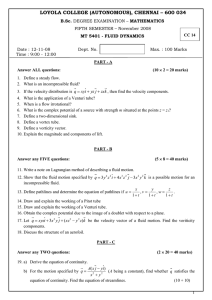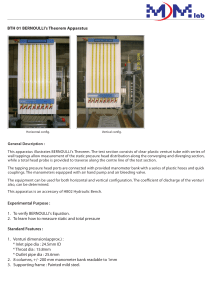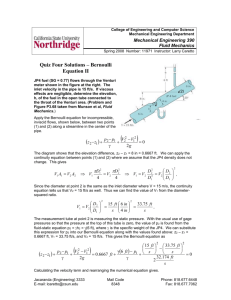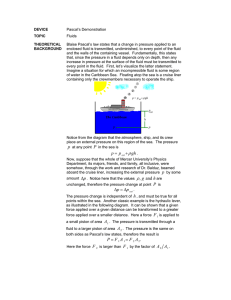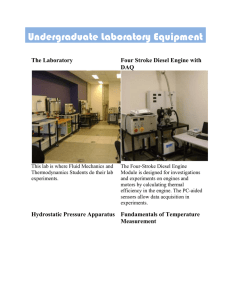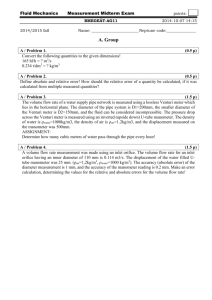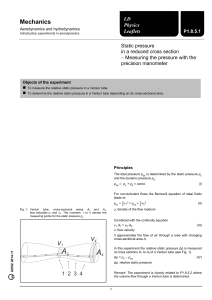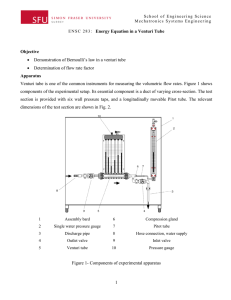DEVICE TOPIC THEORETICAL Venturi Meter Demonstrator
advertisement
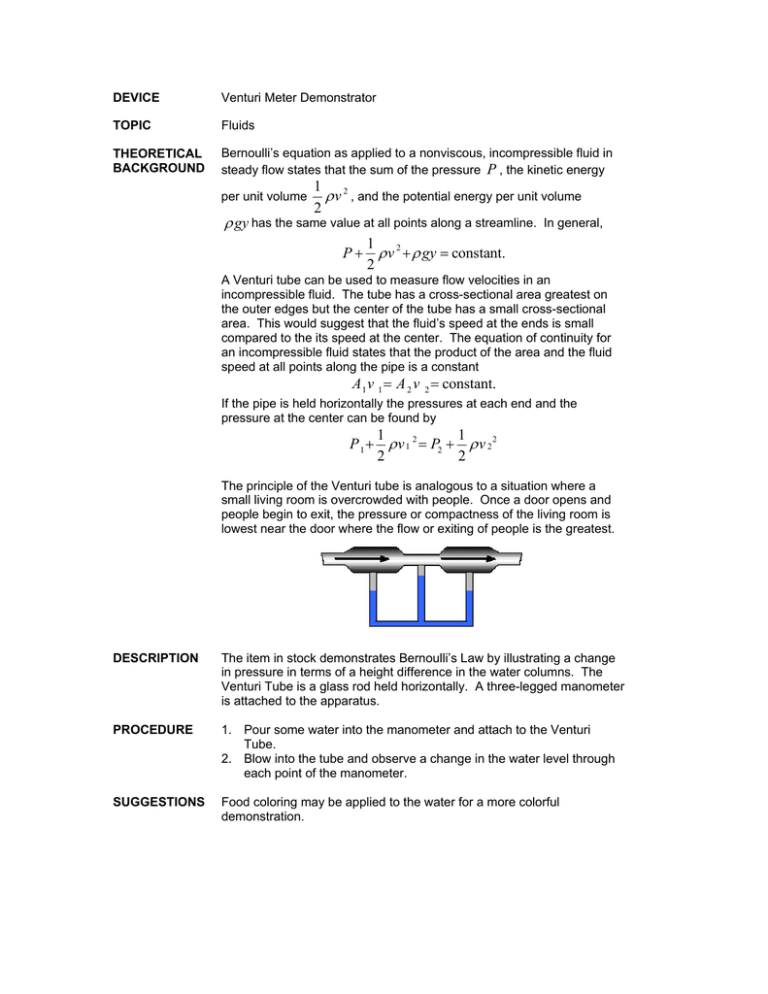
DEVICE Venturi Meter Demonstrator TOPIC Fluids THEORETICAL BACKGROUND Bernoulli’s equation as applied to a nonviscous, incompressible fluid in steady flow states that the sum of the pressure P , the kinetic energy per unit volume 1 2 ρ v , and the potential energy per unit volume 2 ρ gy has the same value at all points along a streamline. 1 P + ρ v 2 + ρ gy = constant. 2 In general, A Venturi tube can be used to measure flow velocities in an incompressible fluid. The tube has a cross-sectional area greatest on the outer edges but the center of the tube has a small cross-sectional area. This would suggest that the fluid’s speed at the ends is small compared to the its speed at the center. The equation of continuity for an incompressible fluid states that the product of the area and the fluid speed at all points along the pipe is a constant A 1 v 1 = A 2 v 2 = constant. If the pipe is held horizontally the pressures at each end and the pressure at the center can be found by 1 1 P 1 + ρ v 1 2 = P2 + ρ v 2 2 2 2 The principle of the Venturi tube is analogous to a situation where a small living room is overcrowded with people. Once a door opens and people begin to exit, the pressure or compactness of the living room is lowest near the door where the flow or exiting of people is the greatest. DESCRIPTION The item in stock demonstrates Bernoulli’s Law by illustrating a change in pressure in terms of a height difference in the water columns. The Venturi Tube is a glass rod held horizontally. A three-legged manometer is attached to the apparatus. PROCEDURE 1. Pour some water into the manometer and attach to the Venturi Tube. 2. Blow into the tube and observe a change in the water level through each point of the manometer. SUGGESTIONS Food coloring may be applied to the water for a more colorful demonstration.
